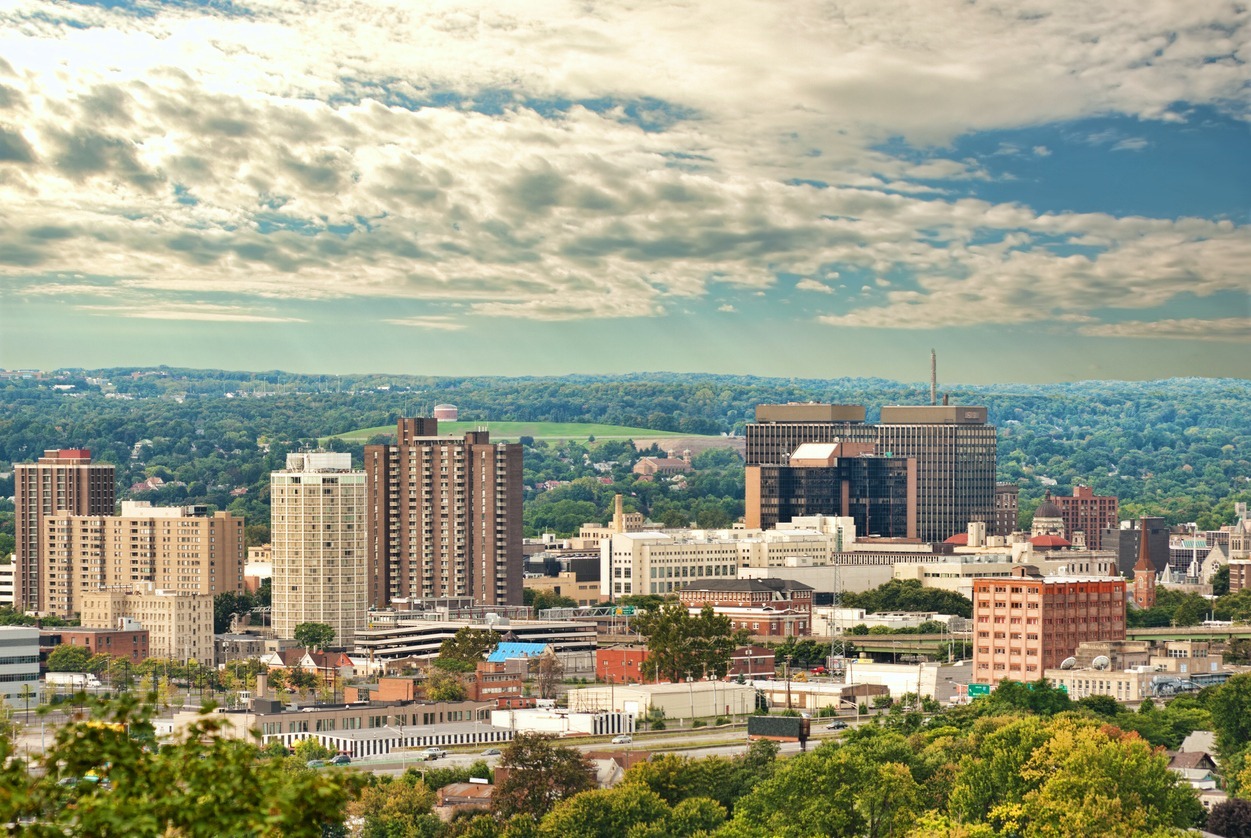Natural disasters can happen anywhere throughout the United States. But there are cities where you’ll feel a lot safer from disasters than others. The Federal Emergency Management Agency (FEMA) established the National Risk Index (NRI), which demonstrates an area’s relative riskiness to natural disasters based on:
- The expected annual loss in property damages;
- The area’s social vulnerability;
- The community preparedness or resilience for natural disasters.
If you find it hard to believe that there are safe US cities to live in the event of natural disasters, indeed, check out some of them:

1) Syracuse, NY
Syracuse, located in upstate New York, doesn’t see much in the way of natural disasters. It has a very low rating for earthquakes, tornadoes, and flooding. While the city does experience storms and lots of snow, Syracuse is often at the top of the list of the safest cities from natural disasters.
2) Dayton, OH
The Great Dayton Flood of 1913, caused by the flooding of the Great Miami River reaching Dayton, is the worst natural disaster in the state’s history based on the number of lives and properties lost. But it seems that the city learned its lessons very well. Its current state-of-the-art flood prevention system has practically eliminated the risk of flooding. The Miami Conservatory District estimates that the city’s system of dams, embankments, and levees safeguards over $7 billion of property in southern Ohio.
3) Cleveland, OH
Another one from Ohio on this list of safest cities is Cleveland. Besides a few of storms that can cause some damage, Cleveland is otherwise a safe place to be in times of natural disasters.
4) Columbus, OH
It seems Ohio is the ideal place to take shelter in times of disaster! Columbus, Ohio’s state capital, is away from the coasts and major fault lines. Thus, its geographical location makes it indeed safe from earthquakes, hurricanes, and even tsunamis. As a Midwestern city, Columbus does experience tornadoes, lightning, and hail. However, the city ranks high in community preparedness.
5) Salt Lake City, UT
Thanks to its inland location, Salt Lake City has rarely seen severe weather events. However, it’s interesting to note that the city does experience landslides and avalanches. Thus, Salt Lake City has laid its mitigation plans to minimize the effects of such events as much as possible.
6) Allentown, PA
Allentown, located northwest of Pennsylvania, is the state’s third-largest city. Although Allentown braces itself for tornadoes as it moves inland, the city has not encountered any significant damage.
7) Minneapolis, MN
Minneapolis’s inland location makes it perfectly safe from earthquakes, hurricanes, and fires. And although it does experience cold winters with heavy snow and ice, the community is very much prepared for such situations.
8) Bozeman, MT
Bozeman’s location within the Rocky Mountains makes it well guarded against severe weather conditions, such as hurricanes. The NRI also ranks Bozeman’s community resilience to natural disasters as very high.
9) Spokane, WA
Spokane’s location – between the Cascade and Rocky Mountains – gives it ample protection from severe weather events like hurricanes and fires. It has a fine climate, too. Spokane experiences warm and mild summers while its winters are not so harsh due to the presence of the two mountains surrounding it. All these factors make Spokane a lovely place to live.
10) Boulder, CO
Boulder is another city shielded by the Rocky Mountains. In addition to its beautiful natural scenery, Boulder is a great place to live because of its fine weather – warm and mild summers and not-so-severe winters. Boulder does have a high expected annual loss, but its location makes the city a very low risk area for most severe weather events that could bring massive damage.
It’s worth noting that these low-risk cities rank high on community resilience or preparedness for natural disasters. It means that no matter where you live – whether in a low-risk or high-risk area – a disaster can strike anywhere and sometimes, even without warning. It’s always good to arm yourself with the necessary city survival basics to increase your chances of making it through in times of natural disasters.